- Trips
- Tour Calendar
- About Our Tours
- Plan a Trip
- Book a Trip
- About Us
- Contact Us



Switzerland's nationwide rail network is extensive and relatively easy to navigate. Rail services are regular and reliable, with train departures typically every half-hour or hour. Switzerland has the most extensive and widely used public transportation system in the world. When you arrive at the Airport in Zürich or Geneva, you simply follow the signs to the train station in the airport to connect with over 28,000 stations and stops anywhere in the country—usually within just a few hours.
Near the train platforms there are self-serve ticket machines where you can purchase your rail tickets, or you can purchase tickets at the ticket office located in the train station. If you already have a printed ticket or rail pass, it is pre-validated, allowing you to board the train directly. There is no need to present your ticket upon boarding; however, you will be required to show it to the conductor when they come around. Ensure that you have your passport readily available, as they may request to see it along with your rail pass.
Seat reservations are typically not necessary on Swiss trains. However, in larger cities, you may occasionally encounter reserved seats marked with small signs above them. It's important to avoid sitting in these designated seats. It's worth noting that seat reservations are only required for specific scenic train routes like the Glacier Express, Bernina Express, international train routes, etc.
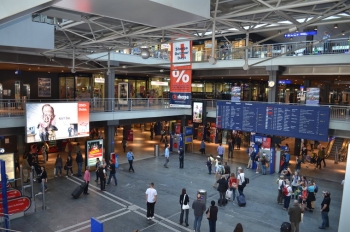
In smaller train stations with one or two platforms, signs will guide you to the platform where your train departs. Larger stations, which may seem overwhelming, have multiple platforms. Electronic displays throughout these stations list departing trains and their corresponding platform numbers. Once you identify your platform, follow the signs leading you there. On the platform, displays indicate departure times and destinations. Ensure you are on the correct side, as trains open only on one side. When in doubt, ask someone to help you find the right train and platform. There are always people willing to help!
Train class (1st or 2nd) is denoted by a "1" or "2" on the side of the car, corresponding to platform signs indicating where 1st and 2nd class cars will stop. Platform sections marked A, B, C, D, with numbers 1 or 2 beneath them, show where these cars will stop. For instance, if you hold a 1st class ticket and the sign displays a "1" below letter B, wait in that section on the platform.
Make sure if you have a 2nd class ticket, you are in the correct section, as rail conductors may ask you to move if you are in a 1st class car without the corresponding ticket. All Swiss trains are non-smoking, as indicated on the car's side and inside.
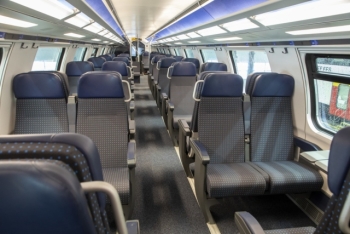
The following are the main differences between first and second class on the major intercity rail lines in Switzerland:
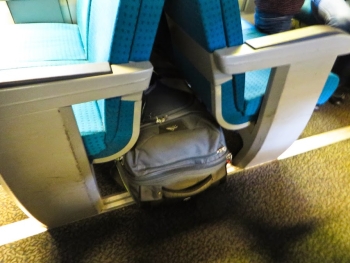
Luggage can be stowed above your seat or in between seats, or on a rack at the end of the car. Avoid putting your luggage on an empty seat next to you, especially if the train is full. It is generally safe to store your luggage in the racks at the end of the compartments but try to keep it in sight and use common sense.
If you are planning a short stopover on the way to your destination, and you'd like to place your luggage in a safe, secure place you can likely store it at the train station. All of Switzerland’s main train stations have a baggage department or offer coin storage luggage lockers for a daily rate. Some lockers take credit cards.
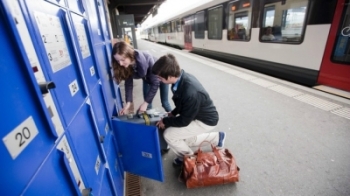
To save time and money, use the toilets on the train rather than those in the station (which can cost money). Train toilets are located on the ends of cars as indicated by a WC sign (water closet).
The next station is usually announced through the train intercom (often in multiple languages) and/or on the display in the train. There are also signs with the station name on the platforms, so you can double check as the train pulls into the station.
Trains usually stop at any station as indicated in the timetable. However, some trains only stop on request at really small stations. The timetable shows whether that's the case, and so do the train intercom and/or displays. You will need to press a button near the doors to signal the train driver that you want to get off. Do so at least a few minutes before arrival. If you have a tight connection, it is a good idea to get your bags and be waiting by the doors to exit as quickly as possible.
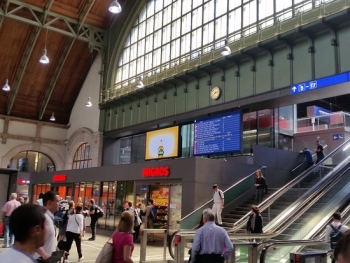
Switzerland's primary train stations resemble small "cities," providing comprehensive amenities for travelers. These hubs typically feature restaurants, sandwich bars, shops, bookstores, newsstands, souvenir stores, and specialized services like hairstylists and cell phone retailers. Rail Cities operate seven days a week, including public holidays, ensuring that all your travel needs are met seamlessly.
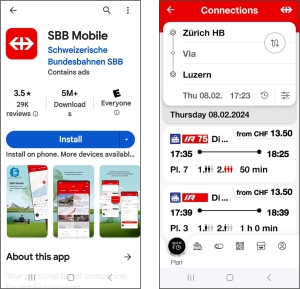
If you have access to a mobile device during your trip, you may want to download the Swiss Federal Railways SBB APP featuring comprehensive timetable and ticket purchase functions. The app shows arrival/departure times, connections, arrival/departing platforms, maps, delays, and so much more. You can also save your schedule to your departure board and set reminders to let you know when your station is coming up.
Would you like to tour Switzerland and discover the Alps on the Grand Train Tour of Switzerland? You'll experience Switzerland's scenic journeys like the Glacier Express and the GoldenPass Line as well as classic mountaintop excursions like the Jungfraujoch and the Gornergrat. Call now to reserve your place on Alpenwild's Scenic Alps by Rail tour.